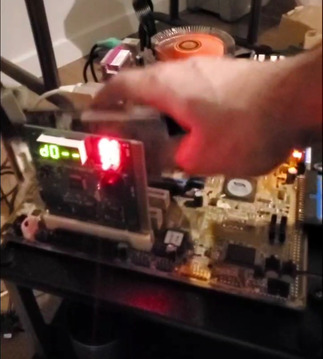First post, by Kahenraz
- Rank
- l33t
Had anyone ever seen this before? It took me by surprise. It's not completely consistent, but I've only ever seen it occur with this particular motherboard. I barely touch the card to the slot and the system turns on.
It seems to be more consistent with graphics cards. I haven't seen it occur with my POST card.
What's happening?
Full video here:
